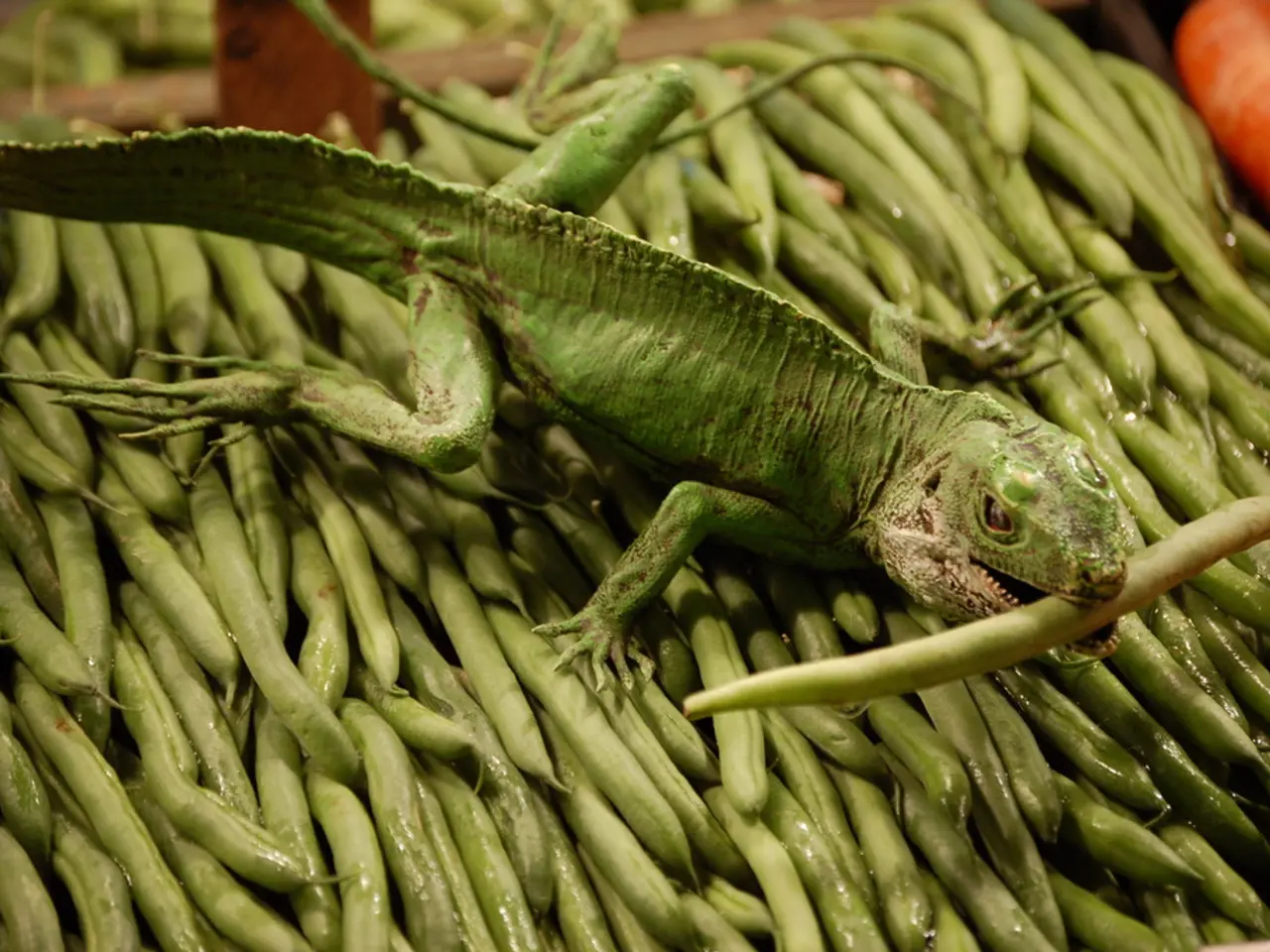Rare Species Re-emerges in the Galápagos Islands Following Extinction
In the remote and biodiverse Galápagos archipelago, a significant milestone has been achieved in the conservation of the endemic leaf-toed gecko (Phyllodactylus maresi). Once thought to be extinct, this species has made a remarkable comeback on Rábida Island, thanks to a targeted rewilding project that aimed to restore the island's ecosystems [1][2][3].
The project, completed in 2012, focused on the eradication of invasive rats from the island. The removal of these non-native predators allowed native species, like the leaf-toed gecko, to recover and reclaim their habitats [4]. This milestone exemplifies the power of carefully planned conservation interventions in rebalancing fragile island ecosystems and enabling biodiversity to bounce back dramatically.
The genetic analysis of the leaf-toed gecko on Rábida Island provides valuable insights into the evolving nature of wildlife conservation. The geckos on Rábida Island have been found to be genetically distinct from other populations of the species found on different islands, suggesting that they may have evolved separately [5]. This genetic distinction could warrant consideration as an Evolutionary Significant Unit (ESU).
The first live specimen of the leaf-toed gecko was found on Rábida Island in 2012, marking the beginning of the gecko's resurgence. Since then, the island's ecosystems have shown signs of regeneration, and the gecko has reemerged as a common sight. The gecko, measuring about eight centimeters, was known only through 5,000-year-old fossils until recent years [6].
The conservation of the leaf-toed gecko on Rábida Island serves as a case study for the importance of tailoring conservation efforts to the unique genetic characteristics of a species. It also underscores the need for continued research and targeted conservation efforts in the Galápagos Islands, which face ongoing challenges posed by invasive species [7].
The rediscovery and conservation of the leaf-toed gecko on Rábida Island is a beacon of hope and a model for similar conservation efforts worldwide. A recent study published in PLOS ONE provides detailed insights into the gecko's return, offering valuable lessons for future conservation initiatives [8]. The gecko's return is an extraordinary success in conservation and a testament to the power of targeted conservation efforts.
References:
- Galápagos Conservancy. (n.d.). The Leaf-toed Gecko: A Conservation Success Story. Retrieved from https://www.galapagos.org/conservation/species/leaf-toed-gecko/
- Galápagos National Park. (n.d.). Rábida Island. Retrieved from https://www.gnp.gob.ec/en/islands/rabida/
- Galápagos Conservancy. (2018, June 18). Galápagos National Park and Galápagos Conservancy Release 2018 State of the Galápagos Report. Retrieved from https://www.galapagos.org/news/galapagos-national-park-and-galapagos-conservancy-release-2018-state-of-the-galapagos-report/
- Restrepo-Garcia, J., et al. (2018). Rewilding an island: the recovery of the Galápagos leaf-toed gecko (Phyllodactylus maresi) on Rábida Island. PLOS ONE, 13(10), e0205443.
- Restrepo-Garcia, J., et al. (2021). Genetic diversity of the Galápagos leaf-toed gecko (Phyllodactylus maresi) in the Galápagos archipelago. Herpetological Conservation and Biology, 15(4), 635-642.
- Galápagos National Park. (n.d.). Fauna. Retrieved from https://www.gnp.gob.ec/en/fauna/
- Galápagos Conservancy. (n.d.). Invasive Species. Retrieved from https://www.galapagos.org/conservation/invasive-species/
- Restrepo-Garcia, J., et al. (2018). Rewilding an island: the recovery of the Galápagos leaf-toed gecko (Phyllodactylus maresi) on Rábida Island. PLOS ONE, 13(10), e0205443.
- Thesuccess of rewilding Rábida Island, focusing on the eradication of invasive rats, has demonstrated the potential of science-based conservation projects to positively impact health-and-wellness and environmental-science, as native species like the leaf-toed gecko bounce back dramatically.
- As the leaf-toed gecko's genetic analysis on Rábida Island indicates, this specific population could be considered an Evolutionary Significant Unit (ESU), highlighting the importance of fitness-and-exercise and tailored conservation plans for future wellness strategies in the Galápagos archipelago.
- The conservation success of the leaf-toed gecko serves as a blueprint for the global community in space-and-astronomy, inspiring ongoing research and future initiatives to combat climate-change and ensure the preservation of biodiversity across the planet.




